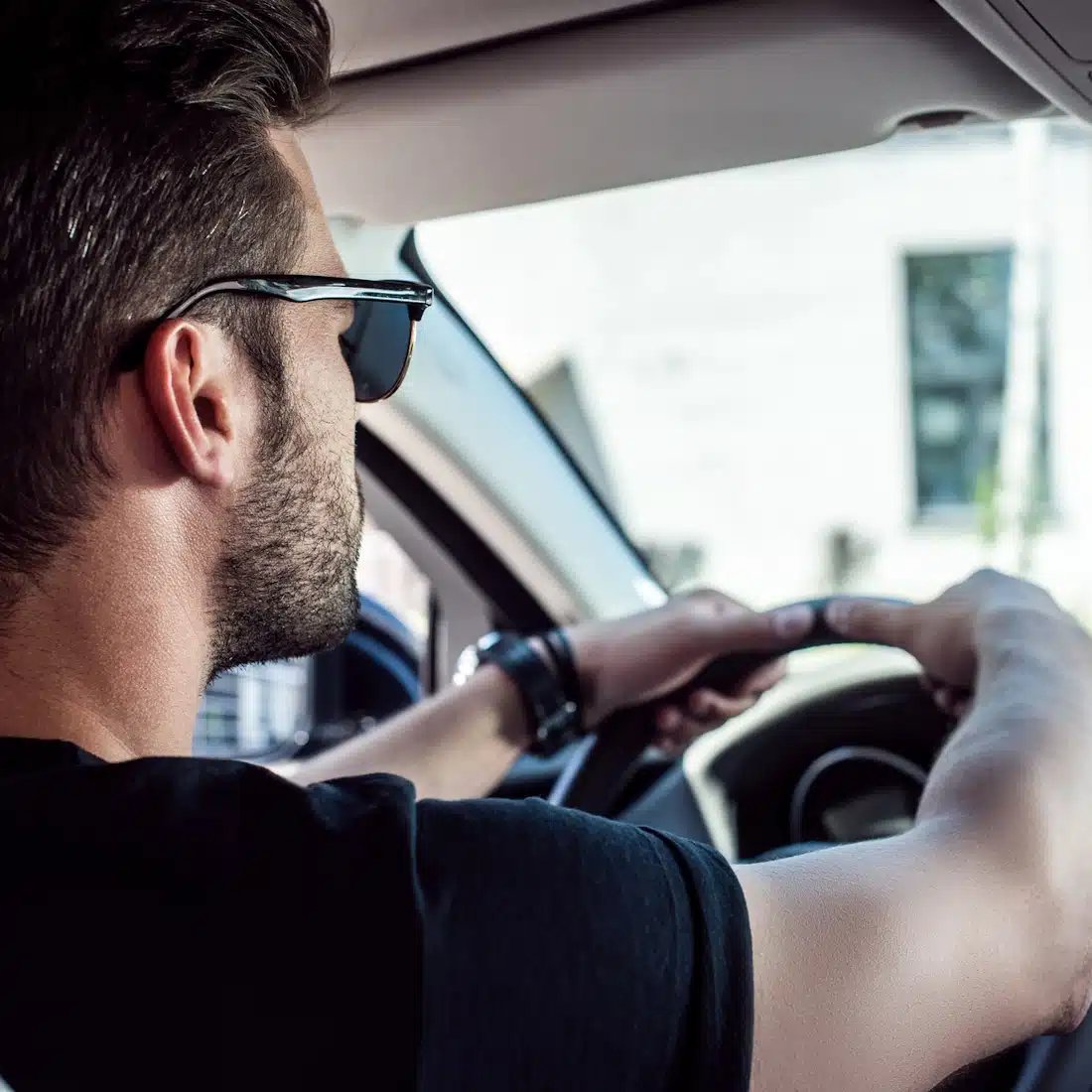
[adinserter block=”1″]
Safety is the most important factor when getting behind the wheel. That’s why we’ve rounded up the best men’s driving sunglasses.
Living in New York, I don’t actually get to use my car that often. Perhaps this is why when I do get to hit the road, I’m almost paranoid when it comes to safety. I check all my mirrors several times. I make sure all passengers are wearing their seatbelts. Heck, I won’t even get behind the wheel if I’ve had even a sniff of beer or wine.
As such, I know a thing or two about the best sunglasses for driving. There are many considerations when choosing driving shades. This is why we’ve also categorized them. Many of these sunglasses happen to also be quite stylish for all face shapes. Of course, at the end of the day, it’s all about practicality. This edit is also more male-oriented, though many sunglass styles and colors are perfectly unisex.
First, exactly what are driving sunglasses?
What Are Driving Sunglasses?
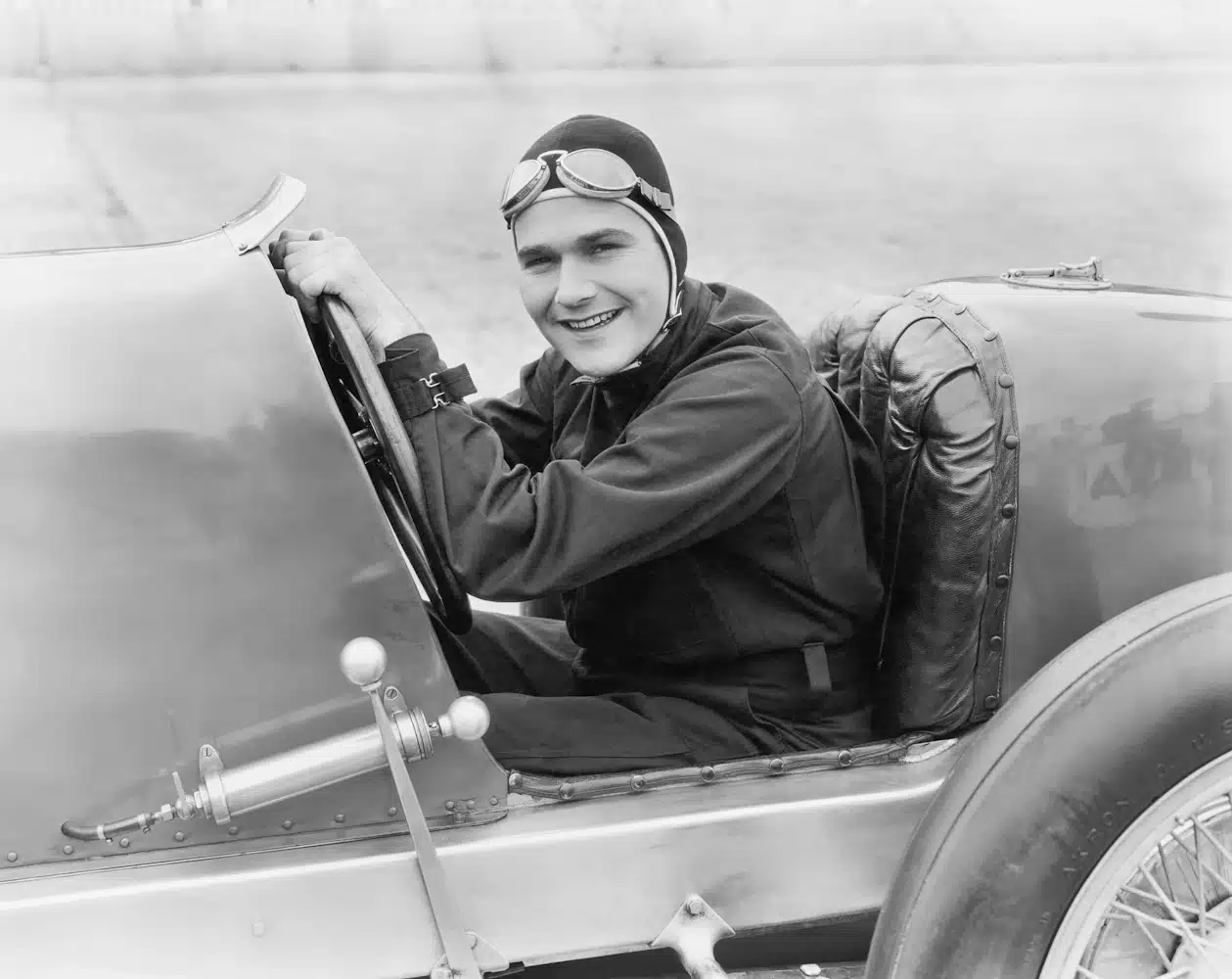
They’re exactly what they sound like: A pair of shades that you wear while in your car. They’re likely polarized, glare-resistant, and purpose-built to ensure you don’t have an obstructed view.
Eyewear has always been a part of the “kit,” if you will, for vehicle operation. There are motorcycle glasses and safety glasses for those who operate large machinery. American Optical built driving goggles in 1907. Have you ever seen how drivers in old turn-of-the-century photographs and illustrations almost look like pilots? They often have hats, driving goggles, and gloves on.
Today’s driving shades are essentially descendants of these pieces of eyewear. However, since most of our cars have roofs these days, they’re a lot like regular sunglasses. In fact, you can wear many driving sunglasses as everyday shades and vice versa — but not always.
Driving Sunglasses vs. Regular Sunglasses
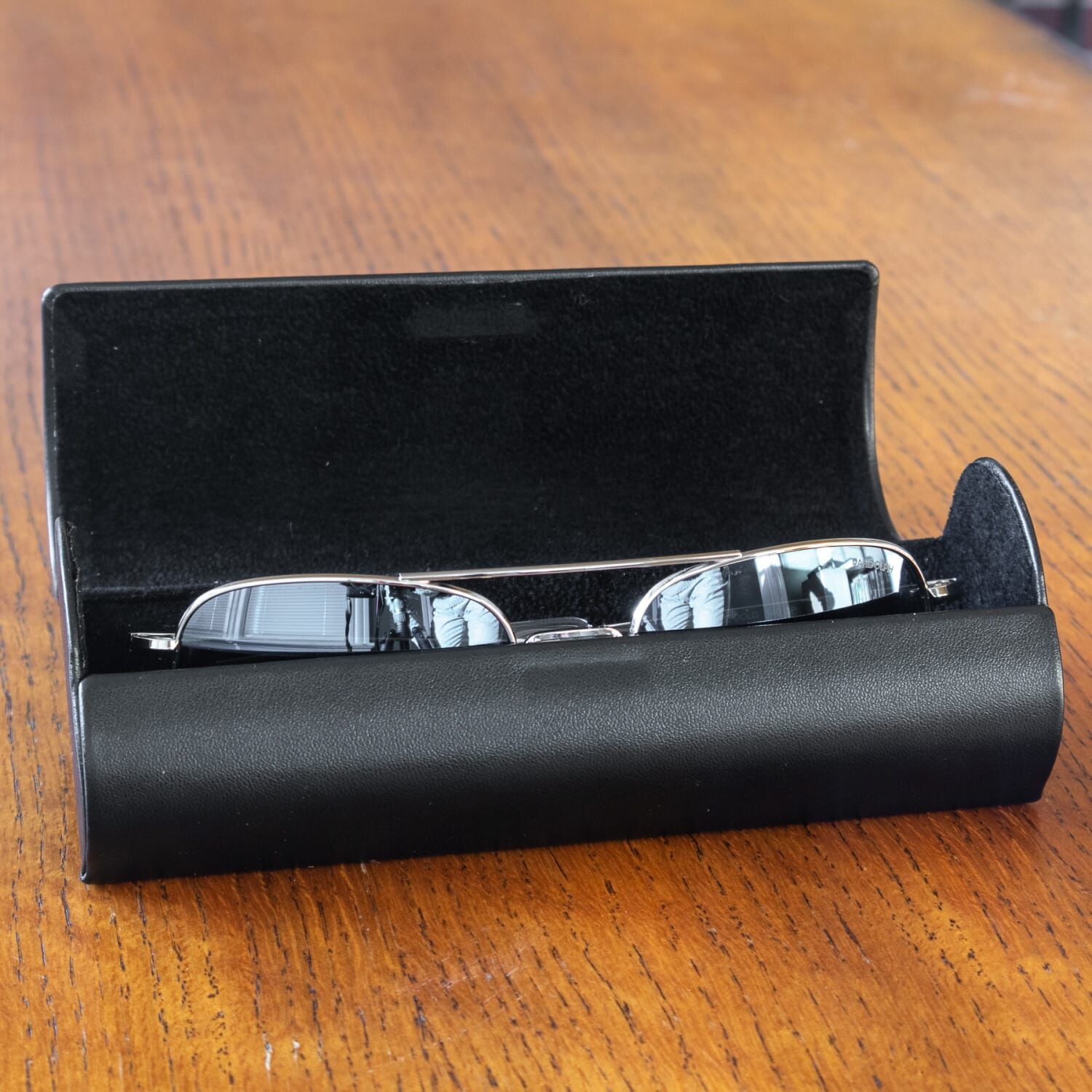
There’s a lot of overlap between regular sunglasses and ones made for driving. However, a few details and features make a pair of shades optimal for car trips.
First of all, they can’t obstruct your view at all. This means the frames shouldn’t get in the way of your periphery. If a pair of glasses forces you to turn your head all the way when you could’ve just shifted your eyes, they’re not ideal.
Relatedly, they should be light and not distracting. This might mean that they aren’t going to be as durable as, say, shades built for hiking. Of course, this depends on their material construction. Still, lightness in weight is more important than strength when you’re behind the wheel.
Vision is crucial when driving. A good pair of car shades should also be anti-glare, high-clear, and able to go from day to night. You don’t need to wear regular sunglasses outside of the car in the evening. Like regular sunglasses, though, protecting your eyes from UV rays is also important.
Finally, most manufacturers polarize sunglasses built for driving. However, there’s a debate about whether this is completely necessary.
Are Polarized Sunglasses Better for Driving?
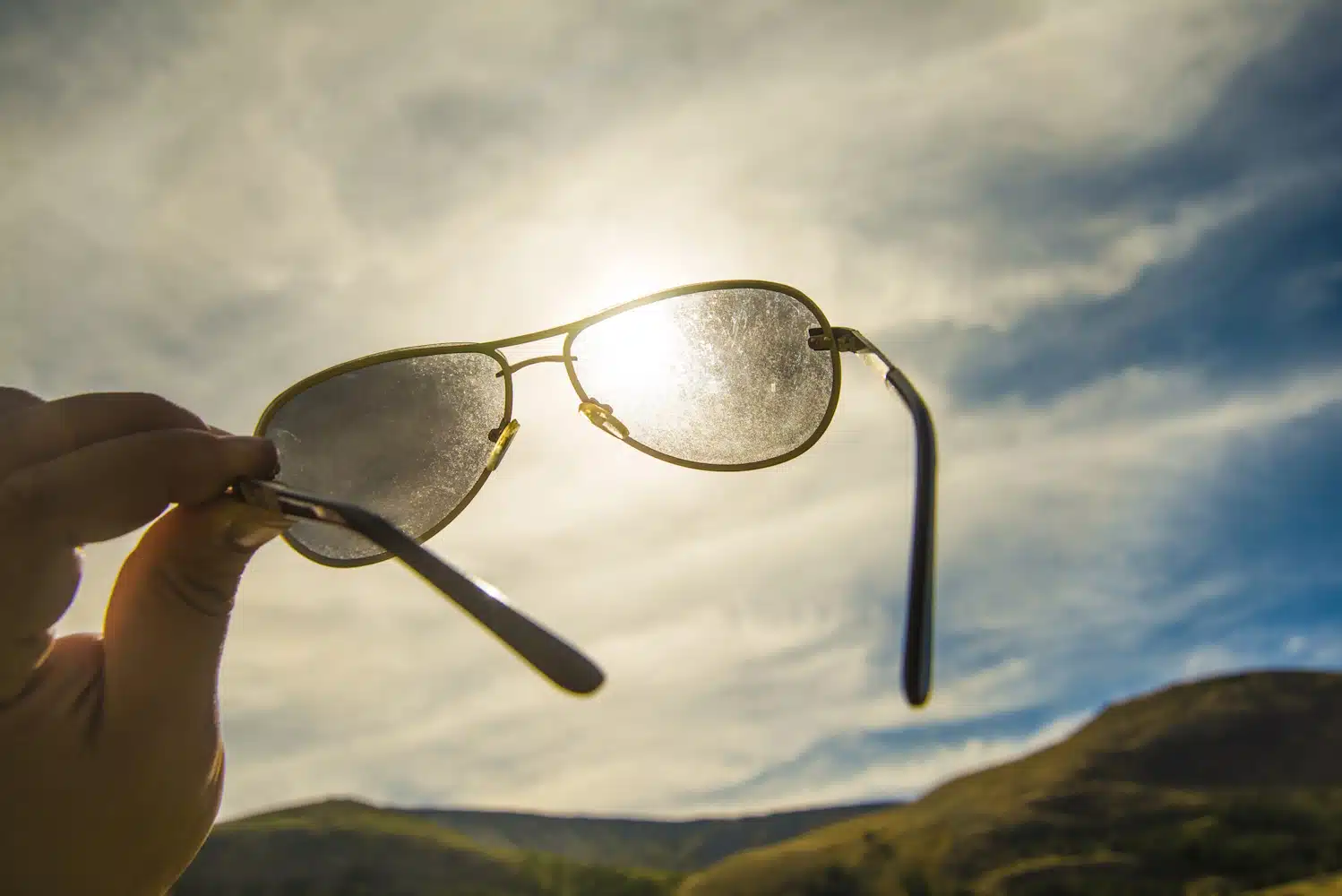
I say, overall, yes. Some people don’t think polarization is necessary. Partly, it has to do with the fact that you can just get a polarized sun visor. They can also block light in places that are already dimly lit. This makes certain polarized sunglasses imperfect for driving.
Polarization is a process in which the designer adds a chemical filter to the lenses. It blocks light waves horizontally, meaning vertical light can come through. They’re almost like vertical window blinds. In the right design and context, this comes with several benefits when driving.
Polarized shades reduce glare from approaching vehicles. If you’re driving in the dark, and the lenses are also night-time-friendly, they’ll lessen glare from the high beams of an approaching car. Polarization also helps reduce eye strain, improves vision, and is useful in incredibly bright conditions. If you’re ever driving towards the sun, polarized lenses are basically a must-have.
Best Driving Sunglasses for Men
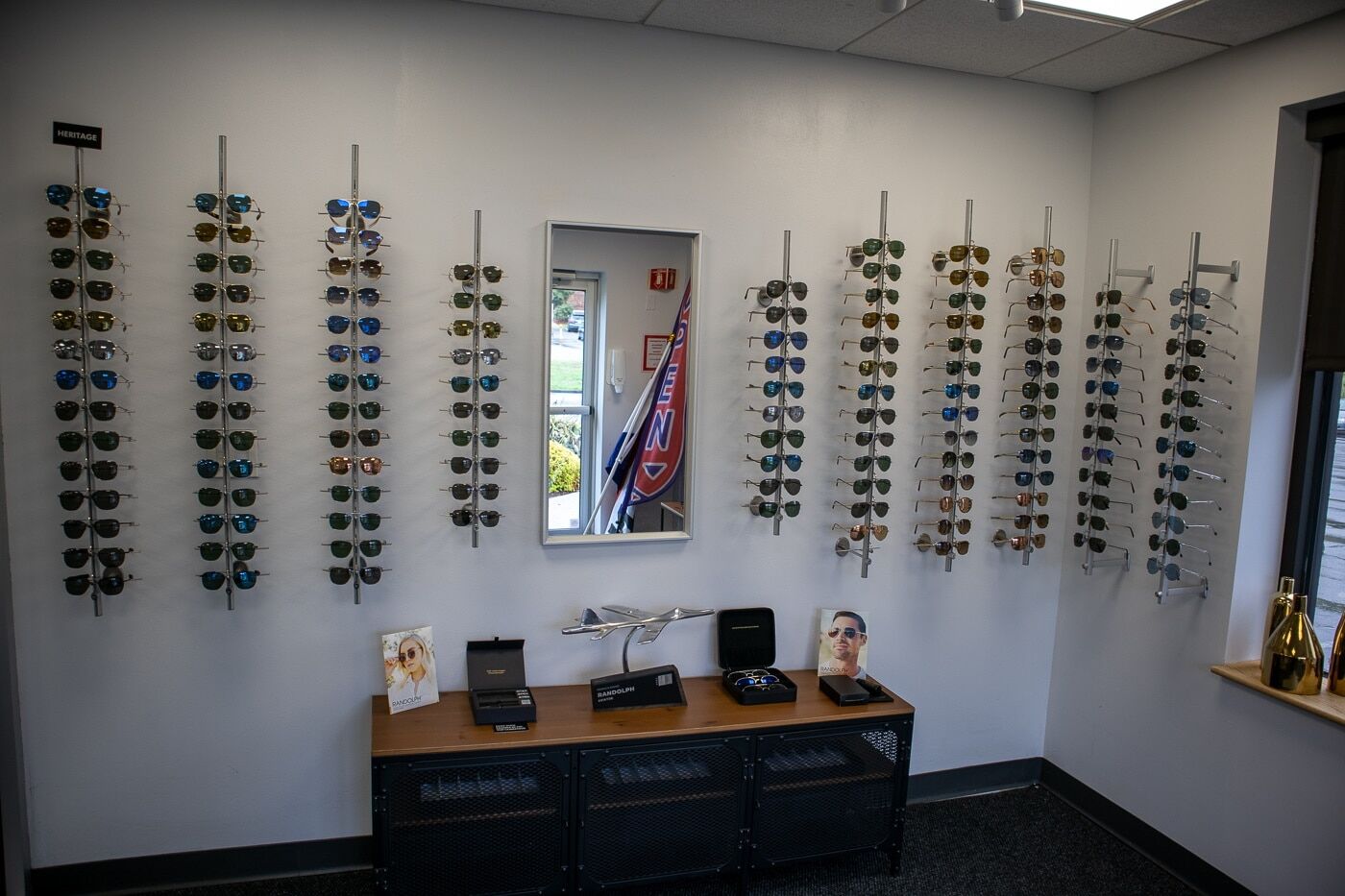
As mentioned, we’ve provided categories and options for each. This way, you’ll know exactly what’s right for you. And even if more than one category applies to your priorities, you can use our organized breakdowns of advantages and disadvantages to ensure you get everything you need.
Like watches, the best driving sunglasses for men are vastly priced. I’ve represented all priorities and budgets here.
Best Sunglasses for Driving Day and Night: Foster Grant Sunday Driver Night Glasses
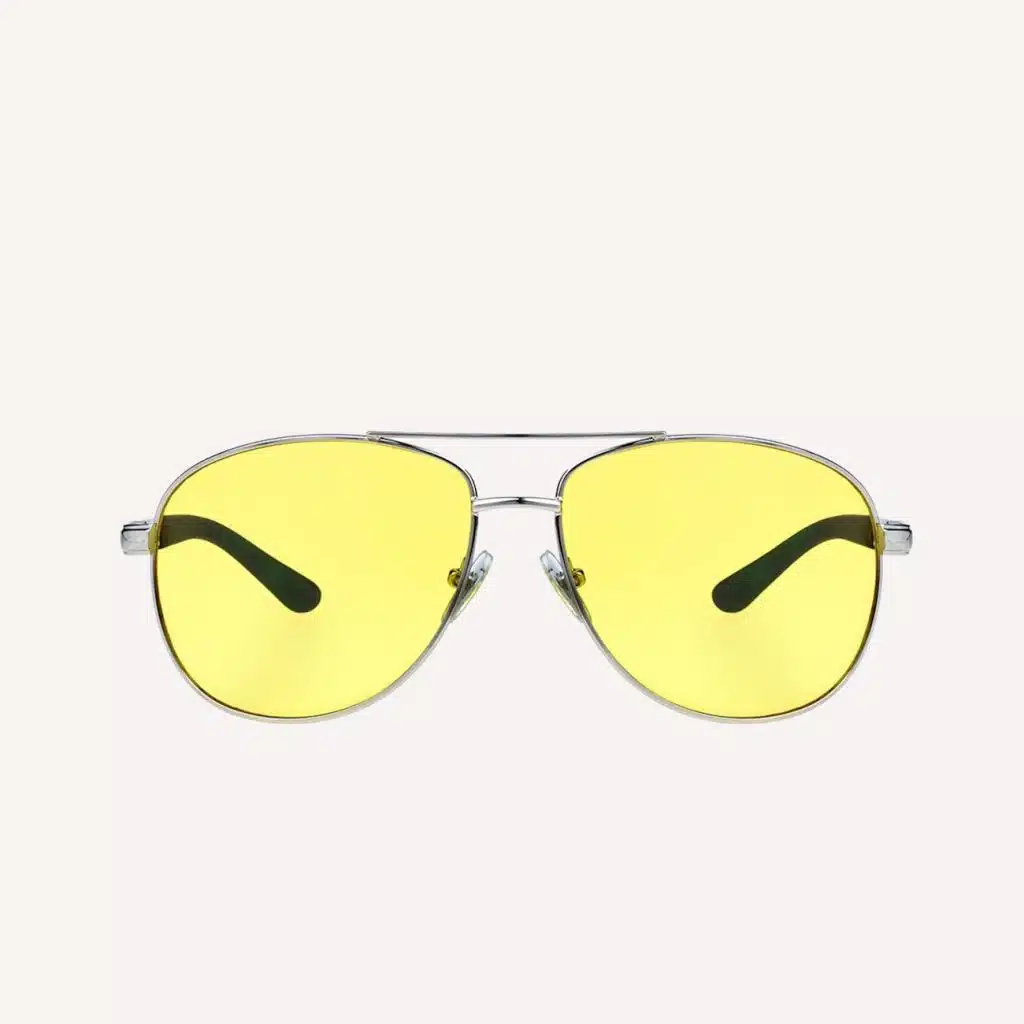
The Foster Grant Sunday Driver Night Glasses are some of the best sunglasses for night driving. Foster Grant took a popular design in their range (aviators, one of my favorite styles) and added yellow lenses. These provide better evening vision, filter blue light from street and headlights, and reduce eye strain.
The yellow tint also enhances contrast. This means that everything in front of you will appear way more distinct and far more specific. Long story short — improved visibility.
Advantages
- Yellow lenses allow you to drive in the dark while also filtering out blue light.
- The polycarbonate construction provides strength and durability.
- The metal frames are thin, stylish, and stable.
Disadvantages
- There’s no indication of polarization on the product page.
Best Night Driving Glasses Alternative: Night Driving Polarized Sunglasses on Amazon
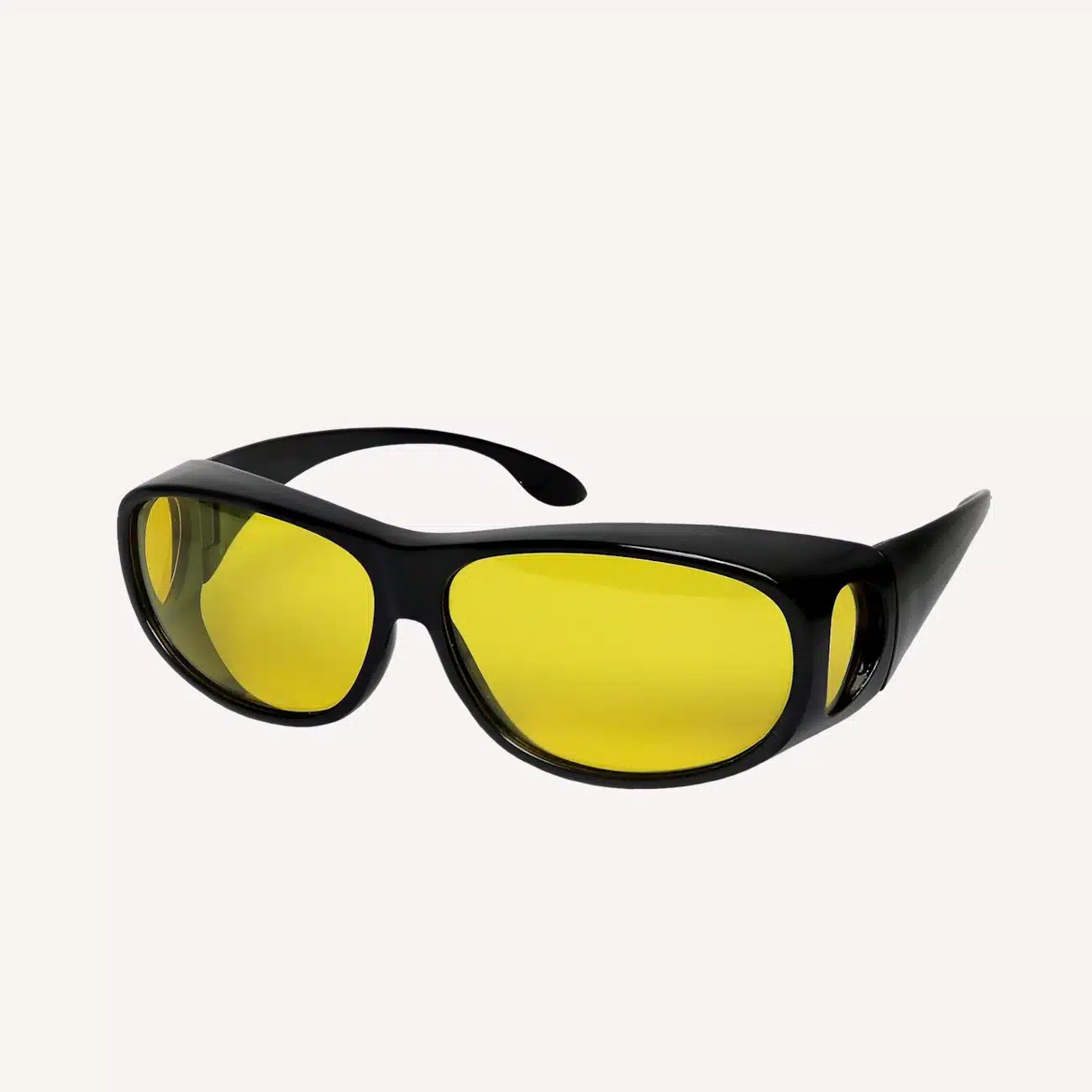
These polarized Night Driving Sunglasses are the men’s best sunglasses for driving day and night. From a budgetary standpoint, they’re even less than $20! They’re bolder and sportier compared to Foster Grant’s classic metal aviator aesthetic.
Again, the yellow tint softens the brightness of blue lights and allows you to see better at night. I’ve also noticed that when you wear them on a cloudy day, the lenses almost make it look more like a sunny day. That’s one heck of a mood lifter if you ask me.
Overall, they’re very comfortable, but the nose area initially pinches a bit. It doesn’t take long to get used to, so you might want to “break these in” before you take them driving.
Advantages
- Yellow lenses allow you to take these sunglasses from day to night.
- The low price makes these highly attainable for all budgets.
- These are big enough that many of you can wear your prescription sunglasses underneath.
Disadvantages
- The frames add a slight pressure to your nose, so you’ll have to get used to that.
Best Sunglasses for Driving Into the Sun: Randolph Engineering Cobalt Aviators
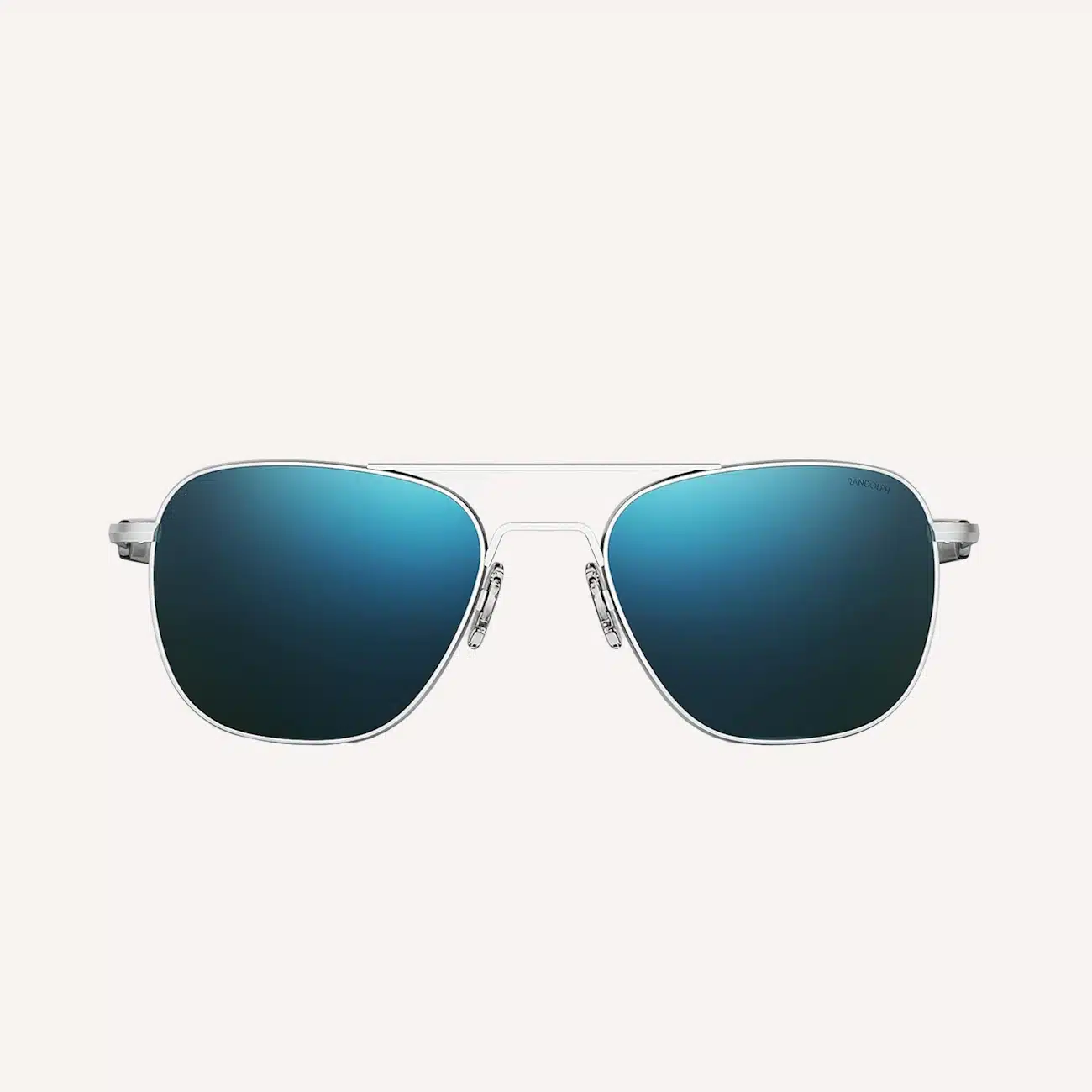
Randolph Engineering makes truly artisanal and high-performing sunglasses. Using over 200 steps when constructing, the US Military even tested these Cobalt Aviators. They can certainly handle a beating. You can feel the top-notch construction as they sit solidly on your face.
The cobalt lenses make these polarized aviators perfect for driving into the sun. They feature a blue iridescent mirror that soothes green and yellow wavelengths. Say goodbye to major eyestrain. Did you know that cobalt glass is also used in flame testing because of its ability to drain out yellow light?
With these shades, you also get an HD view of the road. Cobalt expands your ability to see blue and violet shades. Imagine driving by a field of blue or purple flowers. They’ll look downright photoshopped. Cobalt glass is quite strong, even offering significant chemical resistance.
Advantages
- The cobalt lenses soothe direct glare, enhance visuals and colors, and provide a handsome, stylish look.
- You can get these sunglasses in three sizes (52, 55, and 58 millimeters).
- They’re hand-made in the USA, and you get a lifetime warranty.
- The matte chrome construction hides fingerprints, water spots, and imperfections.
Disadvantages
- Randolph Engineering solidly built these battle-tested sunglasses. However, they’re definitely weighty. They feel great but often leave marks on your nose.
Best Sunglasses for Driving Into the Sun Alternative: Bolt and Arrow 81 Series
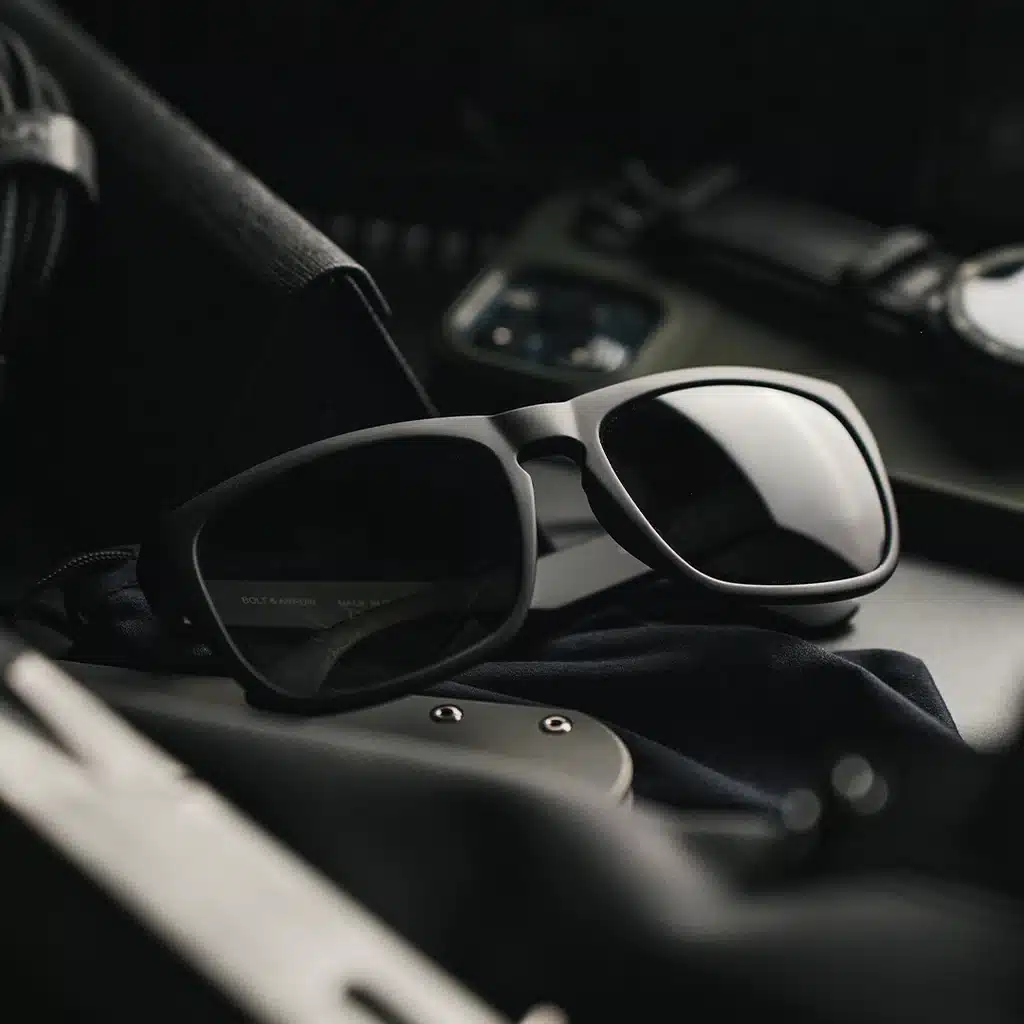
The Bolt and Arrow 81 Series is a high-value model with truly premium specs. Its lenses, which are polarized polycarbonate, are highly effective for driving into high-beam situations. They reduce eye strain and glare and protect your vision from the sun.
They don’t just protect your eyesight from the sun — they protect your actual eyeballs. The lenses block both UVB and UVA rays.
Even more, Bolt and Arrow treats them with a process called Tripel. Moisture, both rain and perspiration, rolls right off the surface. It doesn’t create a film or water stains. Overall, they’re just really easy to keep clean.
The brand makes the frames out of Grilamid TR 90, which is resistant to heat, impact, and chemicals. It’s a flexible but strong construction, perfect for driving glasses.
Advantages
- The polycarbonate lens protects your sight and eyes from the sun and its effects.
- The thermoplastic construction offers excellent overall resistance, strength, and flexibility.
- You can choose a gloss or no gloss lens based on your own personal preferences.
Disadvantages
- Though they offer exceptional clarity and protection, the lenses aren’t especially scratch-resistant.
Best Polarized Sunglasses for Driving: Tomahawk The Osiris
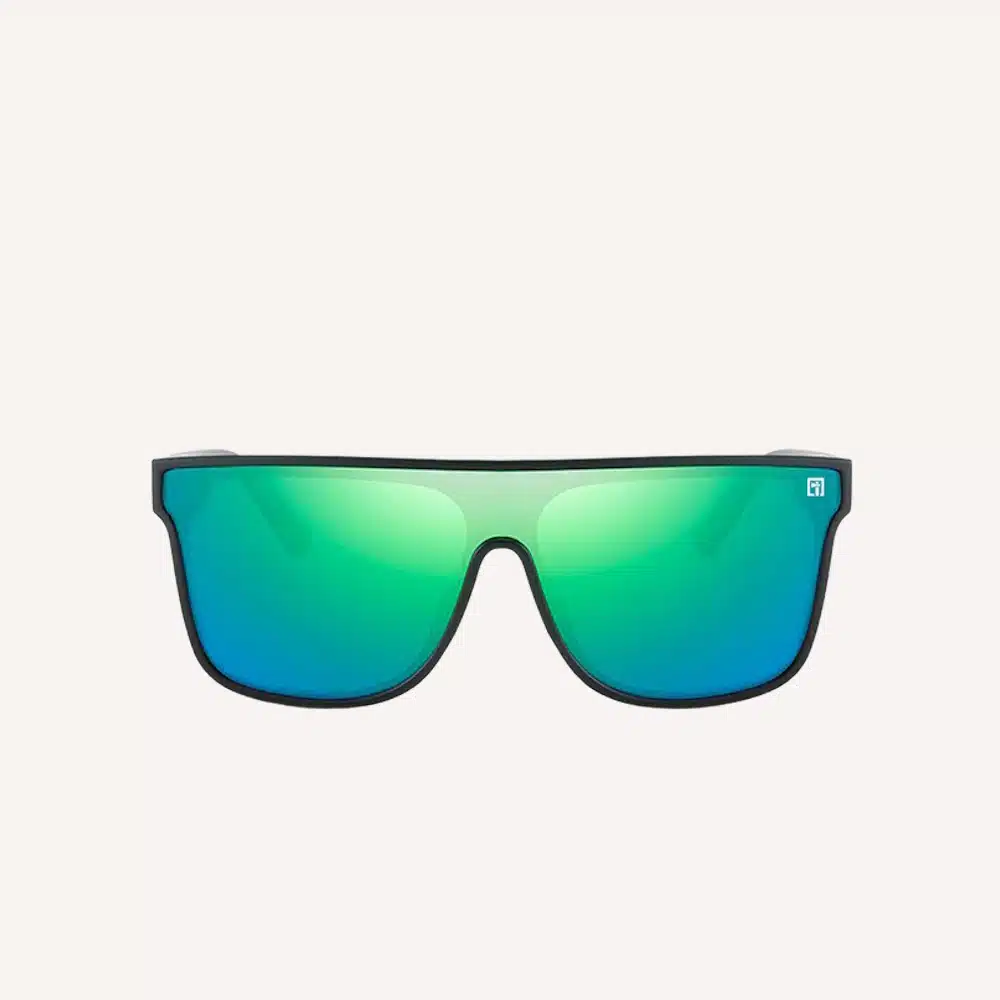
One of the few brands not under the Luxottica umbrella, Tomahawk is a long-time favorite of mine. The bold, stylish Osiris offers the benefits of both polarization and UV400. The former allows only vertically reflected light to pass, while the latter protects your eyes from UV rays up to 400 nanometers. Without getting too technical, these shades constantly fight off sun damage.
Meanwhile, the injection-molded frames flaunt a crisp and flexible design. Since the one-lens composition takes up most of the real estate on these sunglasses, there are fewer potential visual obstructions.
Advantages
- The lenses are polarized and UV400, meaning you’ve got a mix of protection and light clarity.
- Fashionable and fun, these sunglasses have a lively look to them.
- The non-Luxottica pricing is always a plus.
Disadvantages
- The bold style isn’t for everyone, but you can always wear these as practical driving sunglasses.
Best Polarized Sunglasses Alternative: The Knockaround Coastal Dunes
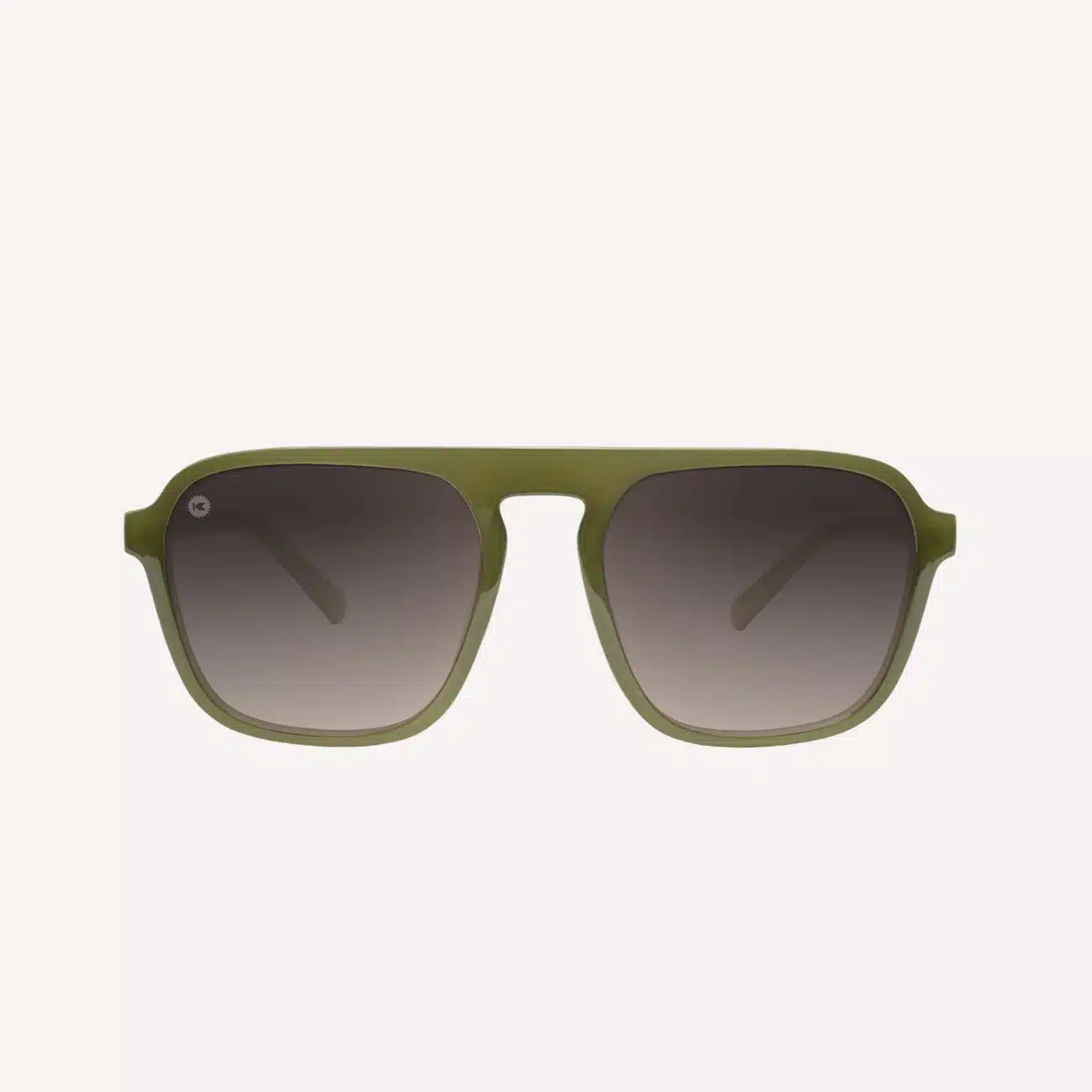
Not only are the Knockaround Coastal Dunes polarized, but they flaunt a gradient as well. This means they’re darker at the top of the lens and subtly fade towards the bottom. The amber gradient is attractive but also practical for driving. That’s why, unlike any run-of-the-mill polarized shades, these are among the best men’s polarized sunglasses for driving.
The darker top protects your eyes from the sun, but you can still look at your dashboard with a quick eye shift. This is especially helpful when quickly checking the navigation on your phone or other GPS devices. Gradients also make shifting from light to dark environments less jarring. Consider these sunglasses next time you’re in a miles-long tunnel!
Advantages
- The design is classic but unique enough, offering a timeless yet distinct look.
- The combination of polarization and gradience protects your eyes from the sun, but you can still quickly look down at your navigator or dashboard.
- These beaters are undeniably affordable.
Disadvantages
- The frames are light and not particularly durable. However, they’re so stylish that I often want to wear them in places other than the car. I just have to make sure not to drop them or sit on them.
Best Color Sunglasses for Driving: Moscot Shtarker Gold Sunglasses

New York-based Moscot is a go-to brand for the discerning. It’s easy to know that Ray-Bans are in vogue. It often takes a Fashion-Week-going style lover to know the importance of Moscot. Many know the brand for their craftsmanship and single-skilled artisans, which is plain to see with the Shtarker Gold sunglasses.
You can get these chic frames in any color imaginable. There are classic greens and blues, conspicuous two-tones, and truly distinct shades of pink, yellow, and orange.
Advantages
- There’s a wide range of hand-tinted colors to choose from.
- The silicone nose pads make these super comfortable.
- The Moscot brand boasts a high level of craftsmanship and makes you look like you’re in the know about style.
Disadvantages
- These sunglasses are well-crafted. Be that as it may, the frame materials are from China, and the price point is still quite premium.
Colored Driving Sunglasses Alternative: Luenx Sunglasses from Amazon

The polarized Luenx Sunglasses are pretty well built for an undeniably budget model. They have a stainless steel frame, good hinges and secure snap-back folding arms. These are polarized sunglasses and come in a wide range of colors. There are shades of black, blue, yellow, and purple, among others.
Advantages
- The scratch-resistant, polarized lenses come in a wide range of colors.
- This is a solidly built budget model, from its stainless steel metal frame to its solid hinges.
- These come in two sizes, 59 or 60 millimeters.
- They’re definitely as cheap as it gets.
Disadvantages
- As with any extra-cheap, Chinese-made sunglasses from Amazon, QA is occasionally inconsistent. It’s a good thing Amazon is easy to work with regarding returns and exchanges.
Best Sunglasses for Sun Glare While Driving: Porsche Design P’8964
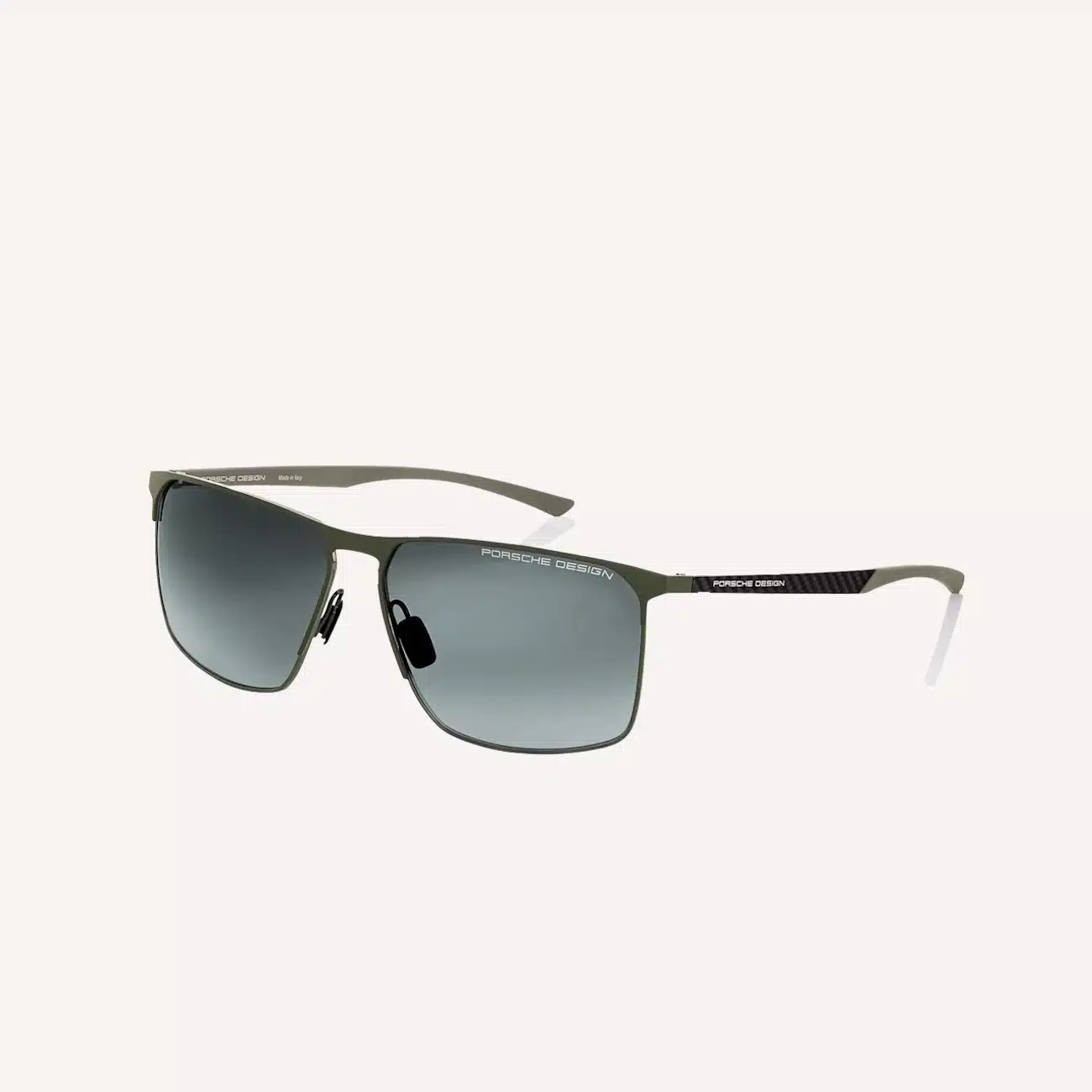
Count on a luxury automobile maker to make one of the most luxurious driving shades on the market. The sleek, sharp P’8964 is high-tech and constructed with a special material resulting from infusing rubber with stainless steel. It’s quite futuristic.
Many know Porsche uses carbon fiber, and the brand made the temple inlays in these sunglasses from genuine carbon fiber. The lenses, meanwhile, bolster contrast and depth perception and resist glare. These are undoubtedly some of the best sunglasses for sun glare while driving.
Advantages
- The state-of-the-art construction features high-tech elements you can’t get anywhere else.
- The design is sleek yet minimalist.
- They’re hand-made in Italy.
Disadvantages
- You really have to get into the investment mindset to acquire these. They’re an undeniably premium option with a premium price tag.
Best Sunglasses for Glare Alternative: Cyxus Polarized Sunglasses
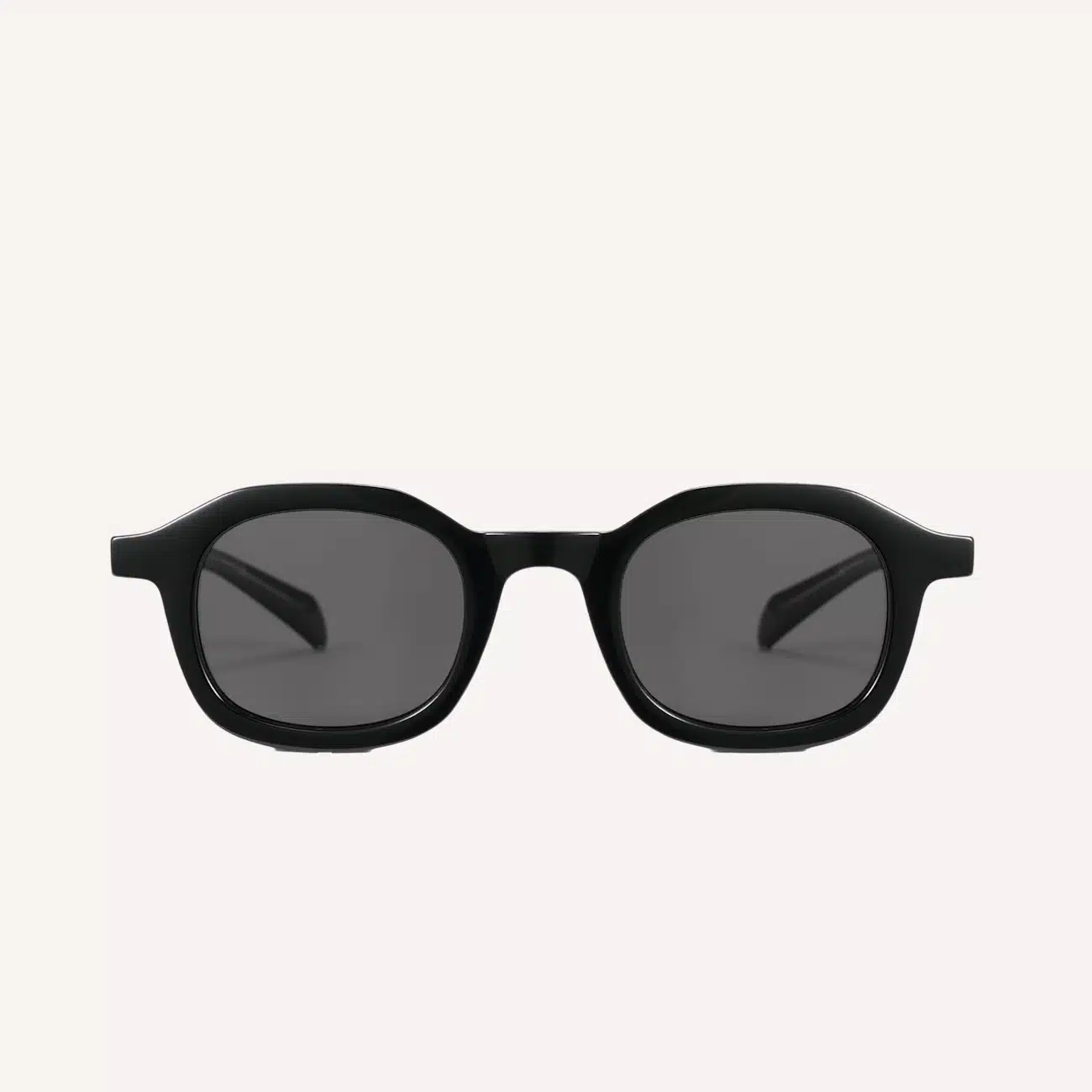
The Cyxus Sunglasses are another budget banger. Their lenses can block 100% of both UVB and UVA rays. They’re also anti-glare — not too shabby for less than $40.
Moreover, the modern, oval silhouette is swanky and fashion-forward.
Advantages
- The stylish frames come in fun variations, including clear grays and tortoise shell.
- UV Protective lenses block 100% of UVA and UVB radiation.
- The frames are comfortable, making them perfect for driving.
Disadvantages
- I’ve heard complaints about long shipping times or low stock.
Best Sunglasses for Convertible Driving: Oakley Sutro Lite
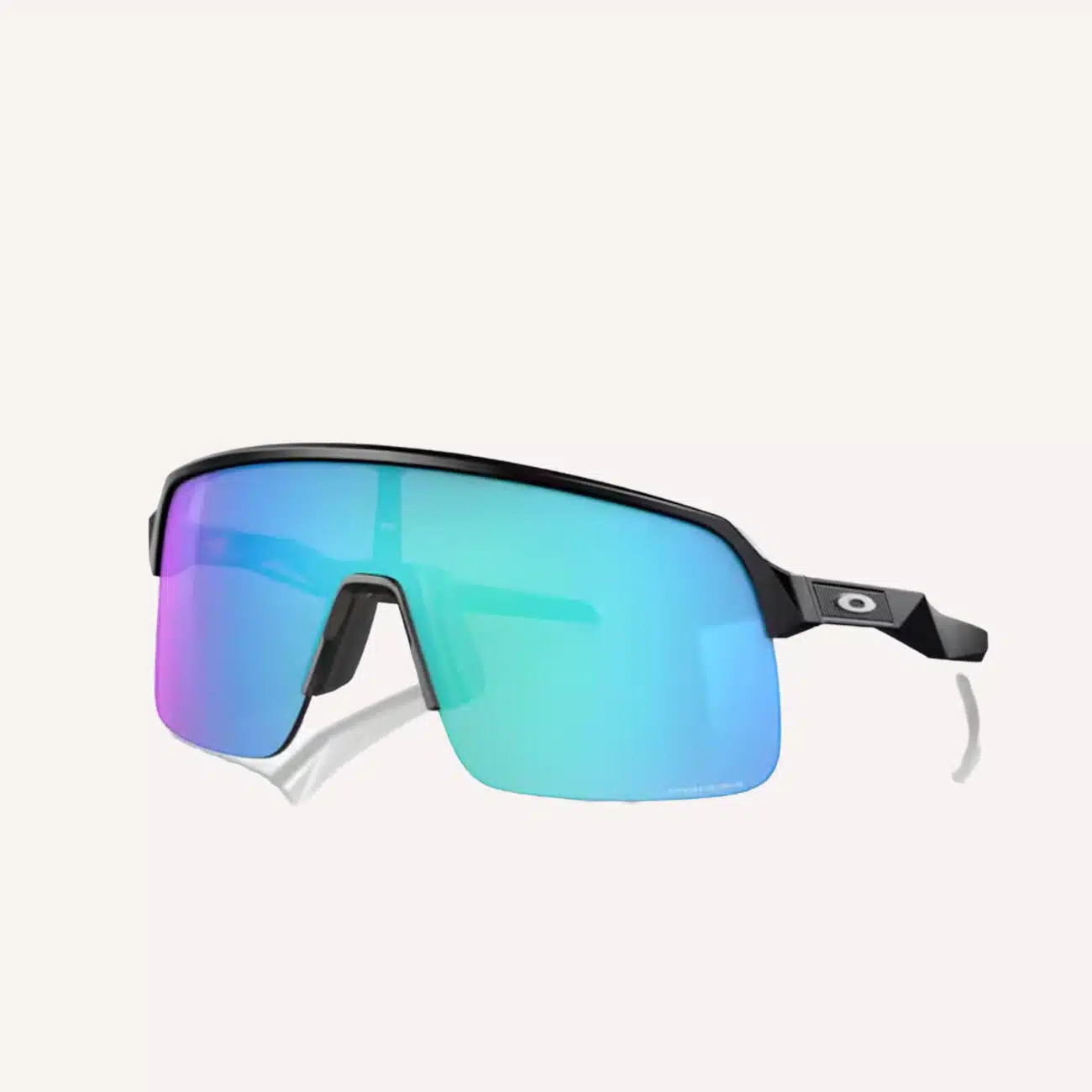
Oakley designed the Sutro Lite for cyclists, but it’s equally effective when driving a convertible. Everything stays in place, even in windy conditions. Meanwhile, its proprietary state-of-the-art polycarbonate lenses also let you see in HD.
Advantages
- The wrap-around design ensures it stays on your head even on windy drives.
- The proprietary PRIZM lenses enhance yellow and white road lanes.
- With 19 lens and frame combinations available, you can essentially customize these sunglasses to your tastes.
Disadvantages
- The wrap-around temples can feel tight at first.
Best Convertible Driving Sunglasses Alternative: Ergodyne Skullerz ODIN Anti Fog Safety Glasses
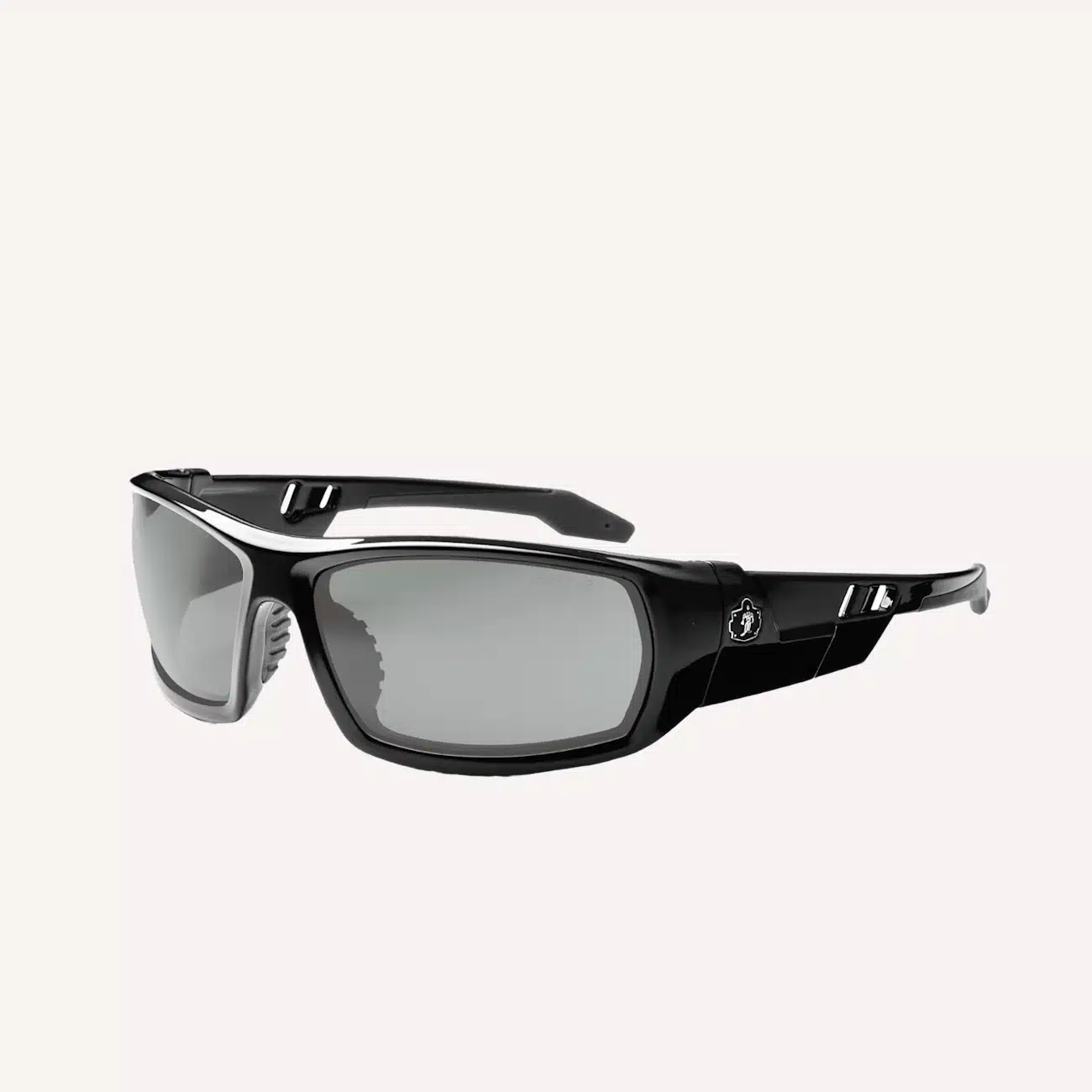
If you don’t want to pay Oakley prices (after all, you’ve already paid for a convertible), consider the Ergodyne Safety Glasses. It’s anti-slip and anti-fog, two excellent features for top-down driving. They also have a cool racer aesthetic.
Advantages
- The anti-fog coating prevents moisture from condensing.
- The non-slip rubber pieces ensure these stay on your face even when you’re driving in the wind.
- There’s an available foam gasket that reduces dust and debris.
Disadvantages
- The multi-surface design sometimes gets caught in your hair when you place them on your head.
How To Choose the Best Driving Sunglasses
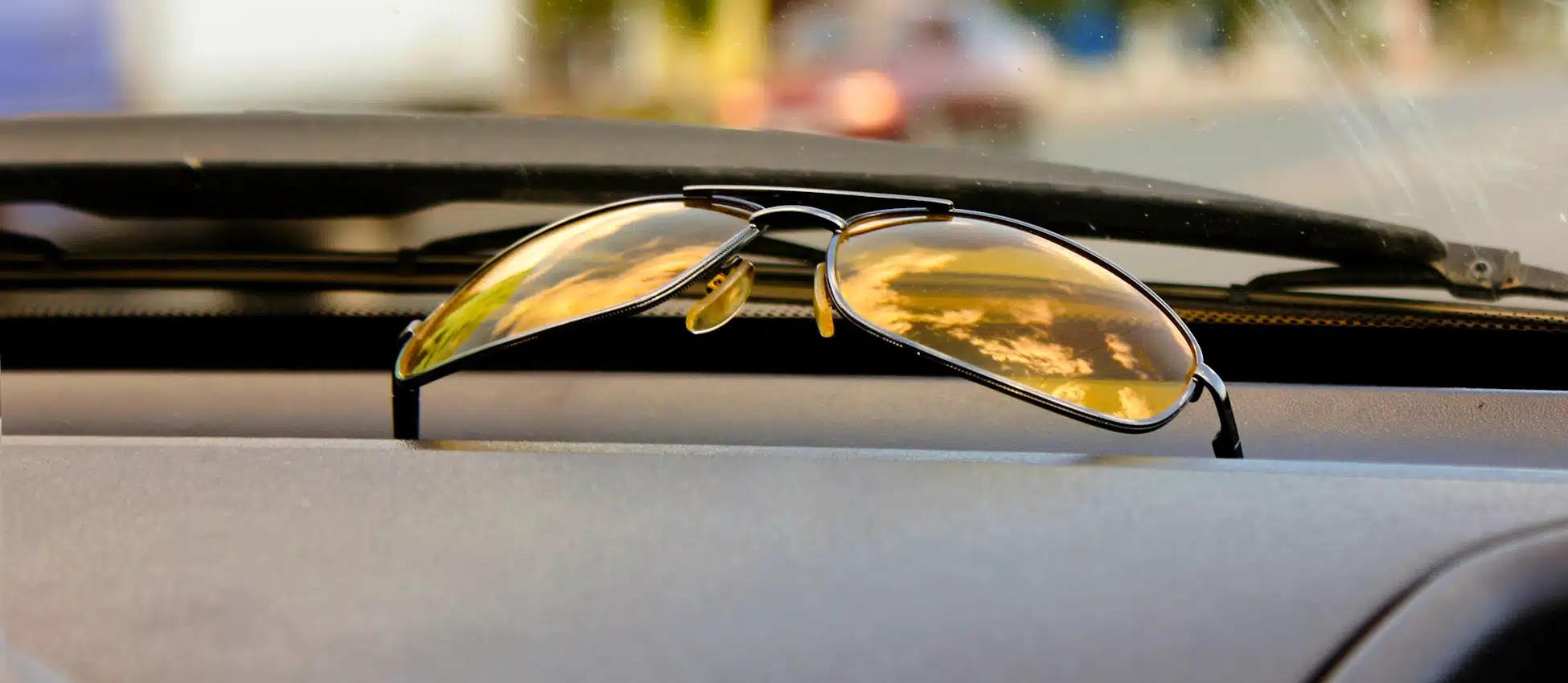
Consider how much each essential feature factors into your lifestyle.
Do you need night lenses? If you drive early in the morning before the sun rises or late at night, you must consider this. Clear night vision is more important than Polarization, though both are ideal.
Will you wear them in places other than the car? Then durability is just as important as comfort. You want the style to suit you but not so much that it’ll obstruct your vision.
And finally, you always want your shades to protect you from the sun’s rays. Overall, it’s a balancing act of priorities.
FAQ
Do you still have questions about sunglasses for driving? Here are common ones.
Are Mirrored Sunglasses Good for Driving?
The reflectiveness of mirrored sunglasses helps reduce glare, which makes them great for bright, sunny conditions. However, they may also make it difficult to see in low light, such as in tunnels or at dusk.
What Color Sunglasses Are Best for Driving?
Polarization and clarity are more important when it comes to driving glasses. However, warm hues like brown and yellow enhance depth perception.
Why Are Some Sunglasses Not Suitable for Driving?
Some brands make their sunglasses solely for style. They may have thick or elaborate frames that could obstruct your peripheral vision. Meanwhile, other brands construct sunglasses for high-impact activity and might be too heavy or distracting for driving purposes.
What Tint Is Best for Driving Sunglasses?
Tints like yellow, copper, brown, and amber enhance depth perception and contrast. This is why you’ll see a lot of night driving glasses in yellow tints.
Conclusion: The Best Men’s Sunglasses for Driving — Your Pick
When it comes to the best sunglasses for driving, what works for you is different from what works for me. If you drive a convertible, you might consider the Ergodyne or the Oakley.
If you want the latest technology and are looking to invest, the Randolphs or the Porsche are the best. I personally love the Moscots.
Which driving shades are you going for?
Questions? Comments? Let us know in the comments below, and don’t forget to sign up for The Modest Man newsletter to get our latest content straight to your inbox.
[adinserter block=”1″]
Credit : Source Post








